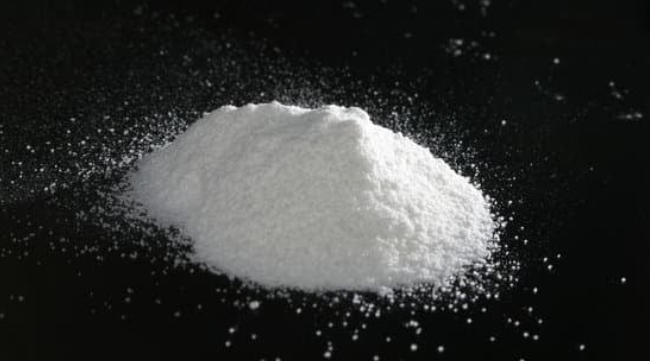
Cocaine use can trigger depression through complex brain changes that disrupt dopamine pathways and stress systems.
Research shows that chronic cocaine use leads to sustained hypodopaminergia during withdrawal, creating anhedonia and depressive symptoms that can persist for weeks or months.
This article explores the mechanisms behind cocaine-induced depression and evidence-based treatment approaches.
How Cocaine Affects Brain Chemistry?
Cocaine blocks dopamine transporters, rapidly elevating dopamine levels in reward pathways during intoxication. However, repeated use triggers opponent processes where the brain recalibrates downward.
When cocaine is removed, dopamine tone drops below baseline, manifesting as anhedonia, low motivation, and depressive symptoms.
This hyperdopaminergic to hypodopaminergic transition mirrors patterns seen in Parkinson’s disease, where dopamine deficiency causes depression and apathy. The neuroadaptations that drive this shift include several key changes in brain function.
Dopamine Receptor Changes
PET imaging studies consistently show reduced striatal D2/D3 receptor availability in cocaine users. These receptors are crucial for reward processing and impulse control. Lower D2 levels predict greater reinforcing responses to stimulants and impaired top-down control over behavior.
Meta-analyses confirm significantly reduced D2/D3 receptor availability across stimulant users, representing an allostatic downward shift in dopaminergic tone that underlies withdrawal depression.
Impaired Dopamine Release and Synthesis
Active cocaine users show markedly blunted dopamine responses to stimulant challenges compared to controls. This hypodopaminergia directly correlates with anhedonia severity during withdrawal.
FDOPA PET studies reveal decreasing dopamine synthesis capacity with increasing withdrawal duration, suggesting protracted presynaptic dysfunction that can persist long after cessation.

Dopamine Transporter Upregulation
During acute abstinence, cocaine users show elevated dopamine transporter availability, potentially accelerating dopamine clearance and worsening hypodopaminergia when cocaine is absent. This adaptation compounds withdrawal dysphoria.
Stress System Dysregulation
Cocaine acutely activates the hypothalamic-pituitary-adrenal axis. Chronic HPA dysregulation correlates with depressive symptoms in cocaine users and may perpetuate negative mood states during abstinence.
Brain-derived neurotrophic factor alterations also contribute to cocaine-induced depression. BDNF is central to synaptic plasticity and mood regulation, and biomarker models combining BDNF and cortisol measurements may help identify substance-induced versus independent depression.
Clinical Features of Cocaine Depression
Cocaine use is closely linked with profound depressive episodes, particularly during withdrawal. These mood disturbances often extend beyond temporary sadness, reflecting neurochemical imbalances that shape both emotional well-being and recovery challenges:
Depression During Withdrawal
Clinical studies identify a distinct “RDS+” withdrawal depression phenotype characterized by apathy, anhedonia, and anxiety. These symptoms align with hypodopaminergic behavioral markers across the intoxication-withdrawal cycle.
The temporal clustering of depression symptoms during early withdrawal supports a mechanistic link to cocaine’s neuroadaptations rather than coincidental comorbidity.
Risk Factors for Cocaine-Induced Depression
- Route of administration: Crack cocaine use carries higher psychiatric burden, including depression, anxiety, and suicidality, compared to powder cocaine
- Trauma exposure: Sexual and physical violence among crack users compounds HPA dysregulation and worsens depressive outcomes
- Individual vulnerability: Low baseline D2 receptor availability predicts stronger reinforcing responses and greater depression risk
- Polysubstance use: Co-occurring opioid or alcohol use complicates mood assessment and treatment

Treatment Approaches for Cocaine and Depression
Addressing the overlap of cocaine use and depression requires a multi-pronged treatment plan that targets both conditions simultaneously:
Behavioral Interventions
Contingency management shows the strongest evidence for cocaine use disorder across multiple reviews. By providing immediate reinforcement for negative drug tests, CM helps normalize reward contingencies and can indirectly reduce depressive symptoms.
Cognitive-behavioral therapy provides durable skills for relapse prevention and emotion regulation, addressing both substance use and mood symptoms simultaneously.
Pharmacotherapy Considerations
No medications are FDA-approved for cocaine use disorder. Antidepressant efficacy is mixed, with SSRIs showing limited benefit and potentially worsening retention in some contexts.
Bupropion, a dopamine/norepinephrine reuptake inhibitor, showed increased abstinence in some trials, particularly when combined with contingency management. This aligns with targeting hypodopaminergia underlying cocaine-induced depression.
Neuromodulation
High-frequency rTMS targeting the left dorsolateral prefrontal cortex improves depressive symptoms in cocaine users in randomized controlled trials. While effects on cocaine use vary, rTMS may help break the negative affect-relapse cycle when combined with behavioral treatments.
The Causal Pathway: How Cocaine Causes Depression?
Based on converging evidence, cocaine causes depression through a multi-step mechanism:
- Acute dopamine surges during use produce euphoria and reinforce drug-taking
- Compensatory neuroadaptations emerge: D2 downregulation, elevated DAT, decreased synthesis capacity
- Baseline dopamine tone drops, reducing capacity for reward reactivity and producing anhedonia
- Stress-axis sensitization compounds dopamine deficits during withdrawal
- Prefrontal network dysfunction reduces cognitive control and increases rumination
- Environmental factors like trauma, rapid-delivery routes, and individual vulnerabilities amplify risk
This cascade explains how initial euphoria transitions to persistent anhedonia and depression, creating a reinforcing cycle where negative mood drives continued use.
Why Does This Matter?
Understanding cocaine’s capacity to cause depression has important clinical implications. Depression in cocaine users isn’t merely coincidental but represents a pathophysiological consequence of the drug’s neuroadaptations. This means treating depression is integral to treating the addiction itself.
The most effective approach combines contingency management and cognitive-behavioral therapy as foundational interventions, with targeted adjuncts like rTMS for mood symptoms. Future progress depends on precision approaches that match treatments to neurobiological profiles rather than one-size-fits-all pharmacotherapy.
If you’re struggling with cocaine use and depression, comprehensive treatment addressing both conditions simultaneously offers the best path forward. Contact our team to learn about evidence-based treatment options that can help break the cycle of addiction and mood disorders.
